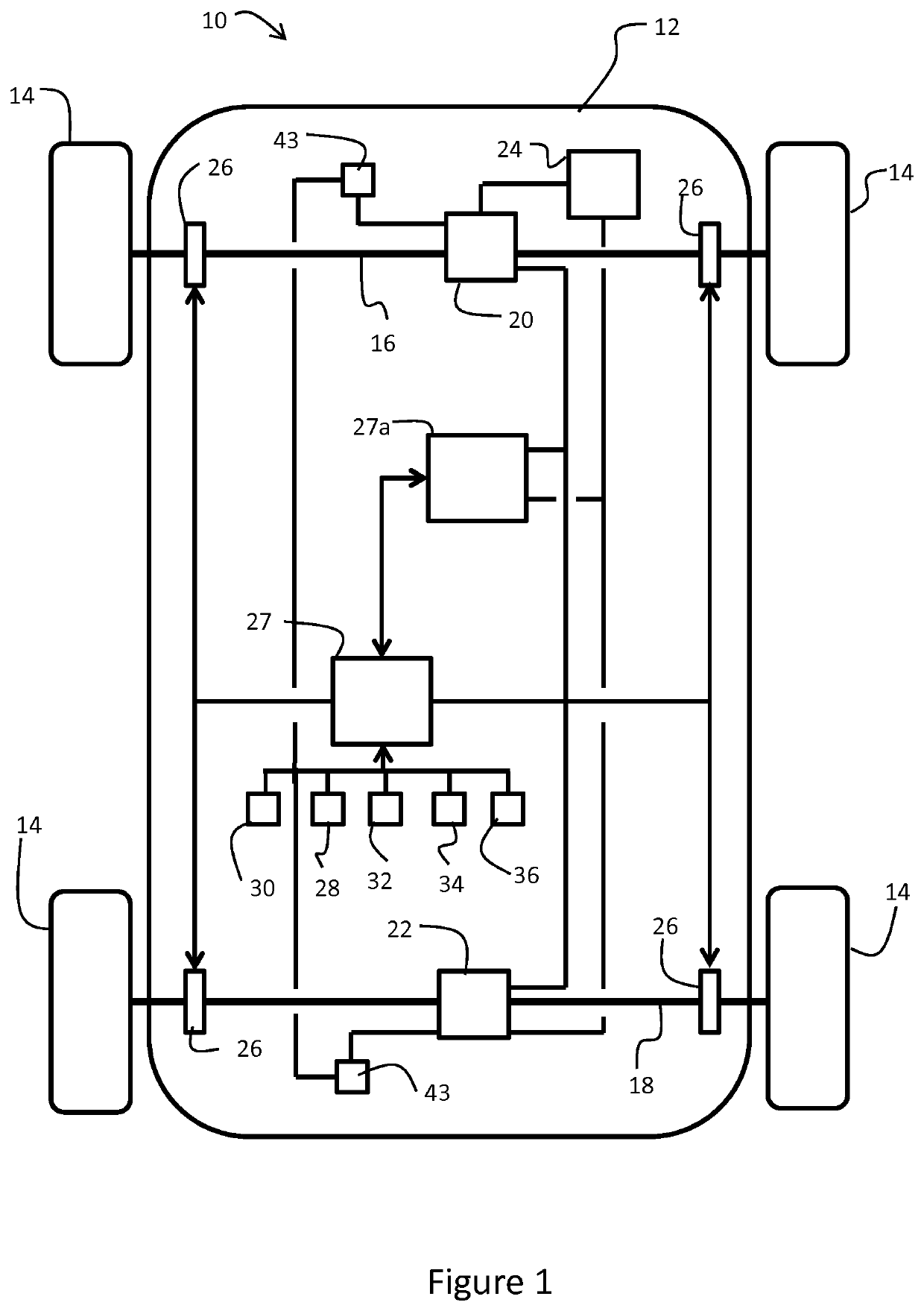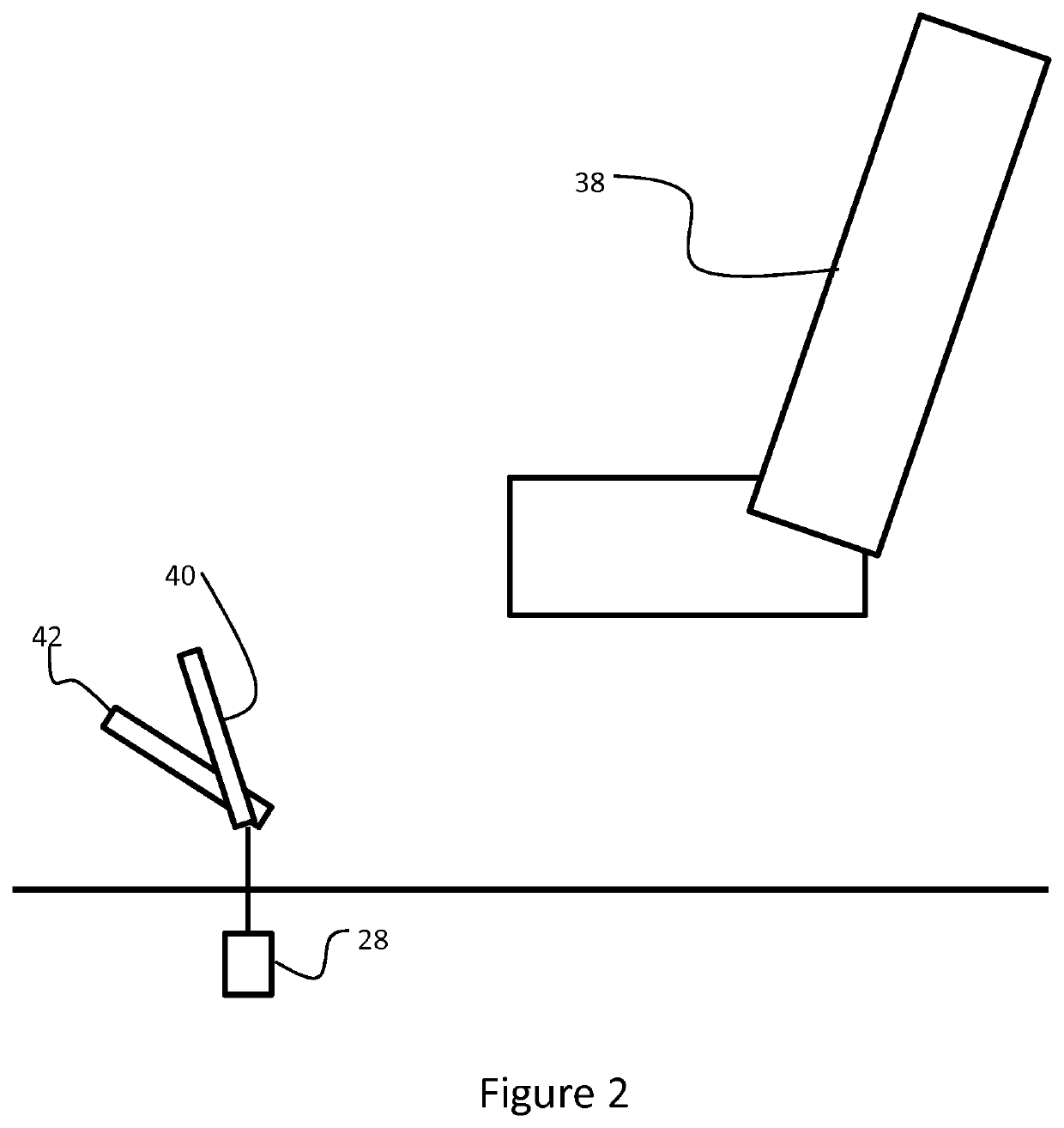Electric vehicle braking system, method, controller and computer program product
a technology for electric vehicles and brake systems, applied in brake systems, electrodynamic brake systems, electric vehicles, etc., can solve the problems of inefficient energy generation, non-optimal energy generation, and inefficient energy generation, and achieve the effect of maximizing energy generation
- Summary
- Abstract
- Description
- Claims
- Application Information
AI Technical Summary
Benefits of technology
Problems solved by technology
Method used
Image
Examples
Embodiment Construction
[0041]With reference to FIG. 1, a vehicle 10 includes a body 12 driven by a set of wheels 14. The wheels 14 support the body on respective front and rear axles 16, 18.
[0042]The vehicle in this embodiment is an electric vehicle, though this invention is also applicable to hybrid electric vehicles. The electric vehicle 10 includes a front machine 20 on the front axle 16 and a rear machine 22 on the rear axle 18. Alternatively, the vehicle 10 may include more than one machine on each axle 16, 18, for instance one machine on each side shaft, or expressed differently, one machine per wheel. Each machine is operable to act as a motor for converting electrical energy into kinetic energy for powering the respective axle. In addition, each machine is operable to act as a generator for converting kinetic energy recovered during a braking event into electrical energy. The electrical energy is stored in a battery 24.
[0043]The vehicle 10 also includes hydraulic braking provisions in the form of ...
PUM
 Login to View More
Login to View More Abstract
Description
Claims
Application Information
 Login to View More
Login to View More - R&D
- Intellectual Property
- Life Sciences
- Materials
- Tech Scout
- Unparalleled Data Quality
- Higher Quality Content
- 60% Fewer Hallucinations
Browse by: Latest US Patents, China's latest patents, Technical Efficacy Thesaurus, Application Domain, Technology Topic, Popular Technical Reports.
© 2025 PatSnap. All rights reserved.Legal|Privacy policy|Modern Slavery Act Transparency Statement|Sitemap|About US| Contact US: help@patsnap.com



